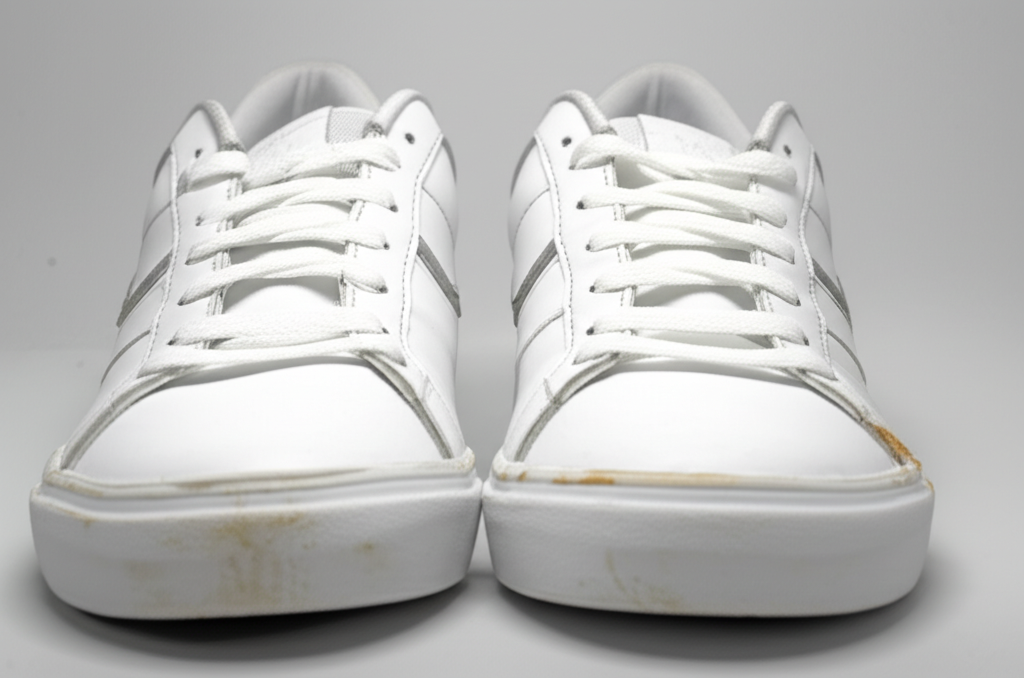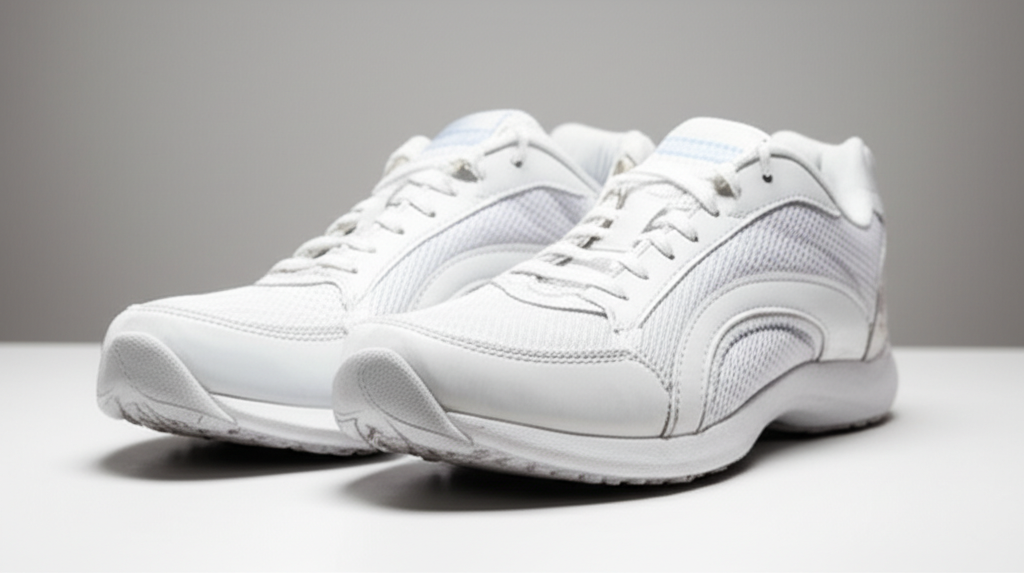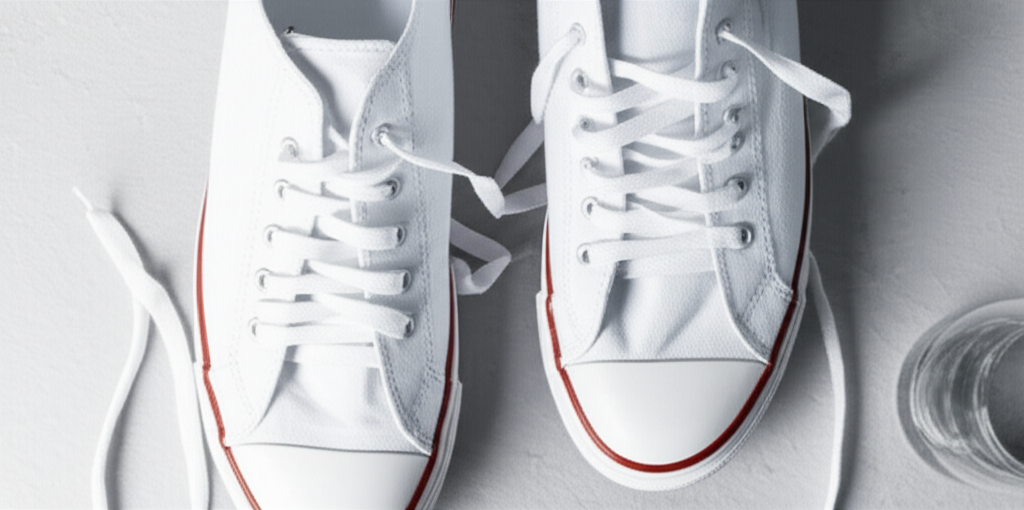Does Bleach Clean White Shoes? Amazing Results!
Yes, bleach can effectively clean white shoes, tackling tough stains and yellowing for surprisingly amazing results when used correctly and with caution. This guide shows you how to safely restore your white sneakers to their former glory.
Key Takeaways
- Bleach brightens white fabrics and removes stubborn stains.
- Always dilute bleach for shoe cleaning.
- Test bleach on an inconspicuous area first.
- Protect non-bleachable materials from damage.
- Rinse thoroughly to prevent fabric weakening.
- Consider alternatives for delicate shoe materials.
White shoes are a classic. They go with everything! But keeping them pristine can feel like an uphill battle. You’ve probably seen those stubborn grass stains, scuff marks, or that dingy yellowing creep in. It’s easy to wonder if there’s a magic bullet. Many people ask, “Does bleach clean white shoes?” The short answer is yes, but it requires a careful approach. With the right technique, you can bring back that crisp, clean look to your favorite white footwear. We’ll walk you through exactly how to do it safely and effectively.
Understanding Bleach and White Shoes

Bleach, typically household chlorine bleach (sodium hypochlorite), is a powerful oxidizing agent. This means it breaks down colored compounds, making it excellent for whitening and stain removal. However, it’s also a harsh chemical that can damage certain materials if not used properly. This is why understanding your shoe’s composition is key before reaching for the bleach.
What Types of White Shoes Can Be Cleaned with Bleach?
Bleach is generally best suited for white shoes made from materials that can withstand its chemical properties. This primarily includes:
- Canvas: Most white canvas sneakers are excellent candidates for bleach cleaning. The fabric is durable enough to handle diluted bleach.
- Cotton: Similar to canvas, cotton uppers can be effectively whitened.
- Rubber Soles and Midsoles: The rubber parts of your shoes, often the most prone to scuffs and yellowing, can be significantly brightened with a diluted bleach solution.
Materials to Avoid Bleach On
It’s crucial to know when not to use bleach. Using it on the wrong materials can cause permanent damage, discoloration, or weakening of the fabric. Avoid bleach on:
- Leather: Bleach can dry out, crack, and permanently discolor leather.
- Suede and Nubuck: These materials are very delicate. Bleach will likely ruin their texture and color.
- Synthetics (Certain Types): Some synthetic materials, especially those with delicate dyes or coatings, can be damaged. Always check manufacturer care instructions.
- Shoes with Colored Accents: Bleach can easily lift color from any colored parts of the shoe, leading to unsightly streaks or patches.
The Pros and Cons of Using Bleach on White Shoes
Like any cleaning method, using bleach has its advantages and disadvantages. Weighing these will help you decide if it’s the right choice for your dirty white shoes.
Advantages
Here’s why bleach is a popular choice for white shoe cleaning:
- Powerful Stain Removal: Bleach excels at breaking down tough stains like grass, mud, and even ink that other cleaners struggle with.
- Excellent Whitening: It effectively tackles yellowing and dinginess, restoring a bright white appearance.
- Disinfecting Properties: Bleach kills bacteria and fungi, helping to eliminate odors.
- Readily Available and Inexpensive: Most households already have bleach, making it a cost-effective solution.
Disadvantages
However, bleach isn’t without its risks:
- Material Damage: Can weaken or discolor fabrics if used improperly or on unsuitable materials.
- Fumes: Bleach produces strong fumes that require good ventilation.
- Environmental Concerns: It’s a harsh chemical that can be harmful to the environment if not disposed of properly.
- Can Cause Yellowing (in some cases): If not thoroughly rinsed or if left on too long, bleach can sometimes react with certain materials and cause yellowing over time, especially on older or synthetic fabrics.
How to Safely Clean White Shoes with Bleach: A Step-by-Step Guide

Ready to give your white shoes a new lease on life? Follow these steps carefully. Remember, dilution and caution are your best friends here.
Step 1: Gather Your Supplies
Before you begin, make sure you have everything you need:
| Item | Purpose |
|---|---|
| Household Bleach (Chlorine-based) | The cleaning agent. |
| Water | For dilution and rinsing. |
| Gloves (Rubber or Disposable) | To protect your skin. |
| Old Toothbrush or Soft Brush | For scrubbing. |
| Soft Cloths or Sponges | For application and wiping. |
| Small Bowl or Bucket | To mix the bleach solution. |
| Mask (Optional but Recommended) | To avoid inhaling fumes. |
| Paper Towels or Old Towels | For drying and protecting surfaces. |
Step 2: Prepare Your Workspace and Shoes
Choose a well-ventilated area, preferably outdoors or near an open window. Protect your work surface with old towels or newspaper. Remove the shoelaces and insoles if possible. Clean off any loose dirt or debris from the shoes using a dry brush.
Step 3: Mix the Bleach Solution
This is a critical step. Never use bleach undiluted. A good starting ratio is 1 part bleach to 5 parts water. For tougher stains, you might try a 1:3 ratio, but always start with a weaker solution and increase if needed. For example, mix 1/4 cup of bleach with 1 1/4 cups of water.
For example: If you need a small amount for spot cleaning, mix 1 tablespoon of bleach with 5 tablespoons of water in your bowl.
Step 4: Test on an Inconspicuous Area
Before applying the bleach solution to the entire shoe, test it on a small, hidden spot. This could be the inside of the tongue, the very bottom of the sole, or an inside seam. Let it sit for a few minutes, then rinse and dry. Check for any discoloration or damage. If it looks good, proceed.
Step 5: Apply the Bleach Solution
Dip your old toothbrush or soft brush into the diluted bleach solution. Gently scrub the stained or yellowed areas of your white shoes. Work in small sections. Avoid oversaturating the fabric. For rubber soles, you can be a bit more vigorous.
Step 6: Let It Sit (Briefly!)
Allow the solution to work on the stains for about 5-10 minutes. Do not let it dry on the fabric. Keep an eye on it. If you see the fabric starting to look overly bleached or damaged, move to the next step immediately.
Step 7: Rinse Thoroughly
This is another vital step. Use a clean cloth dampened with plain water to wipe away the bleach solution. Rinse the cloth frequently. You want to remove all traces of bleach from the shoes. Any remaining bleach can continue to damage the fabric or cause yellowing later. For a deeper rinse, you can briefly hold the shoes under a gentle stream of cool water, being careful not to soak the entire shoe unless it’s a material that can handle it.
Step 8: Clean Shoelaces and Insoles
While the shoes are drying, you can soak the shoelaces and insoles (if removable and washable) in a separate, diluted bleach solution (similar ratio as above) for about 10-15 minutes. Then, rinse them thoroughly and let them air dry.
Step 9: Dry Your Shoes
Stuff the shoes with paper towels or clean, dry cloths to help them maintain their shape and absorb excess moisture. Let them air dry completely away from direct sunlight or heat sources, which can cause yellowing or damage. This can take 24-48 hours. Once dry, re-lace your shoes with the clean laces.
Alternatives to Bleach for White Shoe Cleaning
If your shoes aren’t suitable for bleach, or if you prefer a gentler approach, there are several effective alternatives. These methods are often safer for a wider range of shoe materials.
1. Baking Soda Paste
Baking soda is a mild abrasive and deodorizer. Make a paste with baking soda and water (or a little white vinegar for extra power). Apply it to stains, let it sit for about 30 minutes, then scrub with a toothbrush and rinse.
2. Hydrogen Peroxide
A 3% hydrogen peroxide solution is a gentler bleaching agent than chlorine bleach. It can help lift stains and brighten whites. Apply it directly to stains or use a diluted solution (1 part peroxide to 2 parts water) with a brush. Rinse well afterward.
3. White Vinegar
Vinegar can help break down dirt and grime. Mix equal parts white vinegar and water. Apply with a cloth or brush, scrub, and rinse. It’s also great for neutralizing odors.
4. Specialized Shoe Cleaners
There are many excellent commercial shoe cleaners available specifically designed for sneakers and white shoes. These often contain gentle cleaning agents and are formulated to be safe for various materials. Look for products that offer stain removal and whitening properties.
5. Toothpaste (White, Non-Gel)
For minor scuffs on rubber soles, a dab of white, non-gel toothpaste can work wonders. Apply with a toothbrush, scrub, and wipe clean.
Caring for Different White Shoe Materials
The best cleaning method depends heavily on what your white shoes are made of. Here’s a quick guide:
Canvas and Cotton Shoes
These are the most forgiving materials. Diluted bleach, baking soda paste, or specialized canvas cleaners work well. Machine washing (on a delicate cycle with cold water and a bit of bleach for whites) is sometimes an option for very sturdy canvas shoes, but always check the care label first and remove laces.
Leather and Faux Leather Shoes
Avoid bleach and excessive water. Use a leather cleaner or a mild soap and water solution with a soft cloth. For tough stains, a magic eraser or a specialized leather stain remover might be needed. Always condition leather after cleaning to prevent drying.
Mesh and Knit Shoes
These delicate materials require a gentle touch. A mild soap or detergent mixed with cool water and a soft brush is usually best. Spot clean gently. Avoid harsh scrubbing or bleach, which can snag or damage the fibers.
Suede and Nubuck Shoes
These materials are highly sensitive. Never use water or bleach. Use a specialized suede brush and eraser to remove dry dirt and marks. For tougher stains, a suede cleaner is necessary. It’s best to protect these shoes from getting dirty in the first place with a waterproofing spray.
Pro Tips for Keeping White Shoes White
Prevention and quick action are key to maintaining white shoes. Here are some tips:
- Treat Stains Immediately: The longer a stain sits, the harder it is to remove.
- Use Protective Sprays: Apply a water and stain repellent spray designed for footwear. This creates a barrier against dirt and liquids. Look for sprays suitable for the material of your shoes. For example, Scotchgard offers different formulations for fabric, leather, and suede.
- Clean Soles Regularly: Wipe down the rubber soles and midsoles after each wear with a damp cloth or a magic eraser to prevent dirt buildup.
- Store Properly: Keep white shoes away from direct sunlight and dust when not in use. Store them in a shoe bag or their original box.
- Consider Shoe Trees: Cedar shoe trees help absorb moisture and maintain the shoe’s shape, which can prevent creasing and dirt accumulation.
Frequently Asked Questions (FAQ)
Q1: Can I use bleach to clean the yellowing on my white sneaker soles?
A1: Yes, diluted bleach is very effective at removing yellowing from rubber soles and midsoles. Mix 1 part bleach to 5 parts water, apply with a toothbrush, let it sit for a few minutes, and rinse thoroughly. Be careful not to get it on the shoe’s upper if it’s made of a delicate material.
Q2: How often can I use bleach on my white canvas shoes?
A2: It’s best to use bleach sparingly, perhaps only when absolutely necessary for stubborn stains or significant yellowing. Overuse can weaken the canvas fibers over time. For regular cleaning, opt for milder methods like a baking soda paste or a gentle soap and water.
Q3: My white shoes turned yellow after using bleach. What happened?
A3: This can happen if the bleach solution was too strong, left on too long, not rinsed thoroughly, or if the shoes contain certain chemicals that react with bleach, especially older synthetics or foams. Always dilute bleach significantly, rinse extremely well, and test first. If yellowing persists, try a specialized shoe whitener or a hydrogen peroxide treatment.
Q4: Is it safe to put white shoes in the washing machine with bleach?
A4: For some sturdy white canvas or cotton shoes, yes, but it’s risky. Always check the manufacturer’s care label. If you do machine wash, use a cold, delicate cycle, add bleach for whites only if recommended, and remove laces. It’s often safer to hand-wash.
Q5: What’s the safest way to clean white mesh sneakers?
A5: Mesh is delicate. Avoid bleach and harsh scrubbing. Mix a mild detergent with cool water and gently scrub with a soft brush. Spot clean as much as possible. Rinse gently with cool water and air dry. Commercial sneaker cleaners designed for mesh are also a good option.
Q6: Can I use bleach on white leather shoes?
A6: No, it is strongly advised not to use bleach on leather. Bleach will dry out, crack, and permanently discolor leather. Use a dedicated leather cleaner and conditioner instead.
Conclusion
So, does bleach clean white shoes? Absolutely, and it can deliver amazing results for tough stains and yellowing on appropriate materials like canvas and rubber. However, the key to success lies in using it wisely. Always dilute bleach, test it first, protect sensitive materials, and rinse thoroughly. For delicate fabrics, colored accents, or materials like leather and suede, gentler alternatives are the way to go. By understanding your shoes and using the right techniques, you can keep your white footwear looking sharp and fresh for longer, saving you money and keeping your style on point.

